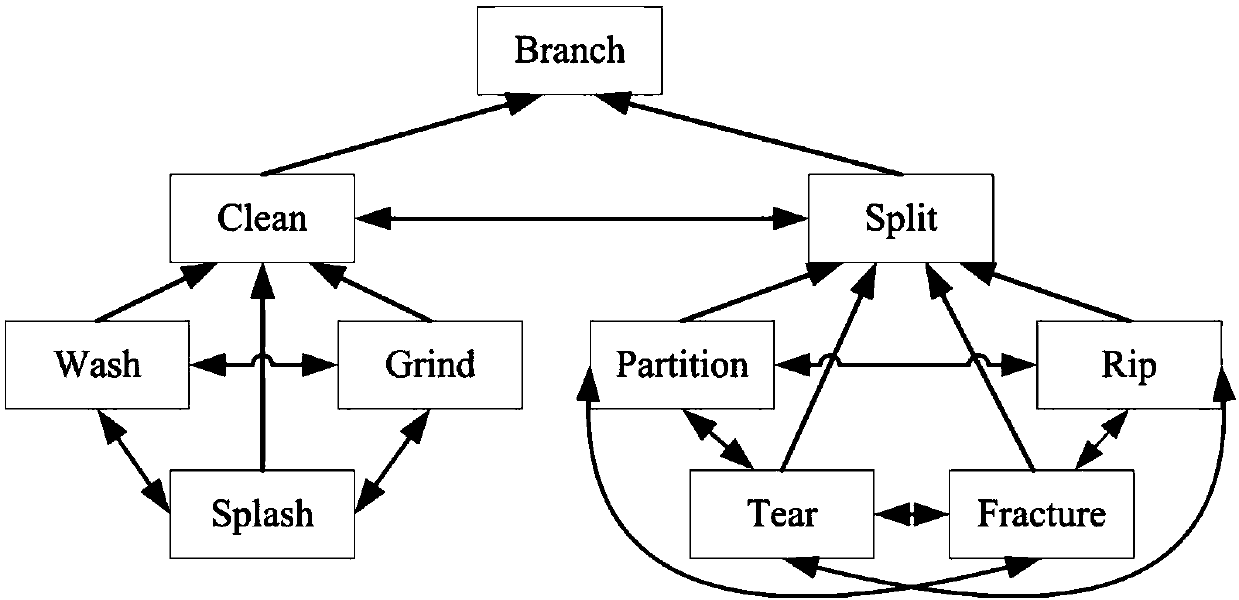Product innovation aided design method based on fuzzy cognitive map
A fuzzy cognitive map and auxiliary design technology, applied in computing, special data processing applications, instruments, etc., can solve problems such as limited product design innovation, product innovation that cannot meet actual product needs, and unsuitable external information sources, etc.
- Summary
- Abstract
- Description
- Claims
- Application Information
AI Technical Summary
Problems solved by technology
Method used
Image
Examples
Embodiment 1
[0080] Such as figure 1 As shown, a product innovation aided design method based on a fuzzy cognitive map disclosed in this embodiment includes the following steps:
[0081] Step 1. Construct a functional lexicon N with a scale suitable as an external information source for auxiliary design according to the requirements of actual engineering problems.
[0082] When solving practical engineering problems in the field of mechanical design, a functional lexicon N with a scale suitable as an external information source for auxiliary design should be constructed according to the actual needs of the field of mechanical design. From the perspective of the size of the functional thesaurus, the more function words contained in the functional thesaurus, the different ways designers describe the same design concept, the more ambiguity will occur; the fewer the function words contained in the functional thesaurus , the harder it is to cover all product designs. The thesaurus based on RF...
Embodiment 2
[0170] Step one, two are with embodiment 1.
[0171] Step 3: According to the function of the product to be designed, obtain function words from the function lexicon N described in step 1 as product innovation auxiliary design information. Obtain the initial input vector IPV (Initial InputVector) according to the obtained function words, and multiply it with the adjacency matrix AM obtained in step 2.4 to obtain the intermediate vector MV (Middle Vector). Transform the intermediate vector MV into the subsequent input vector IPV using a binary compression function 1 . Repeat iterations until IPV n =IPV n-1 , the IPV n As the output vector OPV (Output Vector). According to the output vector OPV, the function words corresponding to the function word in the function word library N mentioned in step 1 are obtained, and the function words corresponding to the function word library N are output.
[0172] That is to use the function words that can represent the product functions...
PUM
 Login to View More
Login to View More Abstract
Description
Claims
Application Information
 Login to View More
Login to View More - R&D
- Intellectual Property
- Life Sciences
- Materials
- Tech Scout
- Unparalleled Data Quality
- Higher Quality Content
- 60% Fewer Hallucinations
Browse by: Latest US Patents, China's latest patents, Technical Efficacy Thesaurus, Application Domain, Technology Topic, Popular Technical Reports.
© 2025 PatSnap. All rights reserved.Legal|Privacy policy|Modern Slavery Act Transparency Statement|Sitemap|About US| Contact US: help@patsnap.com



